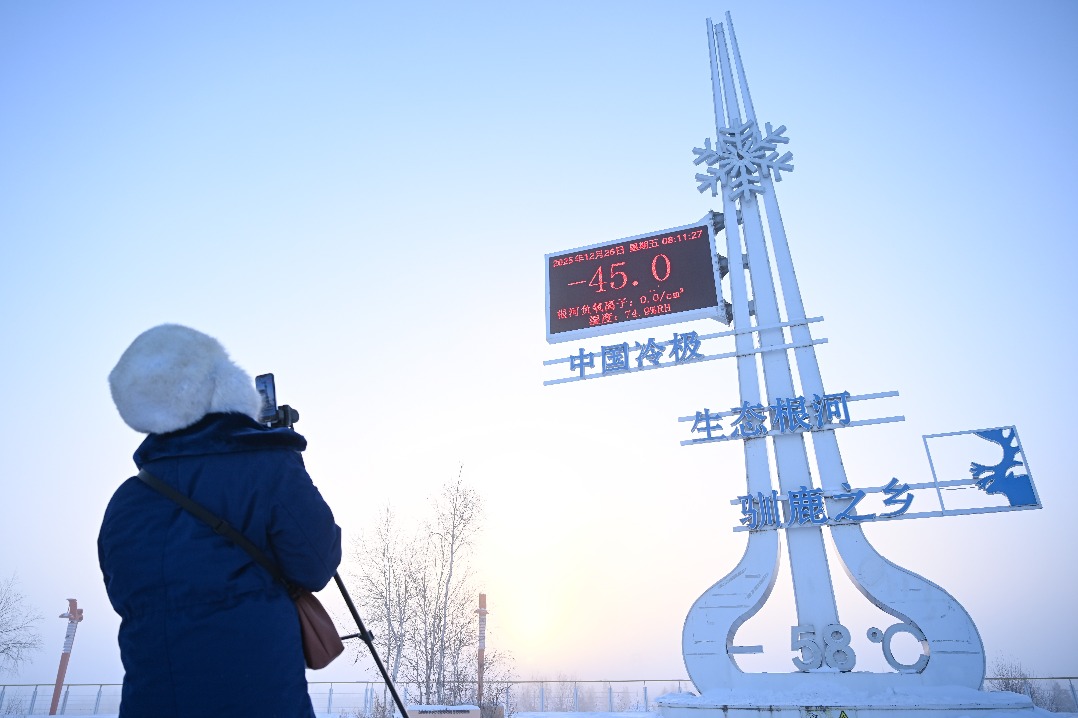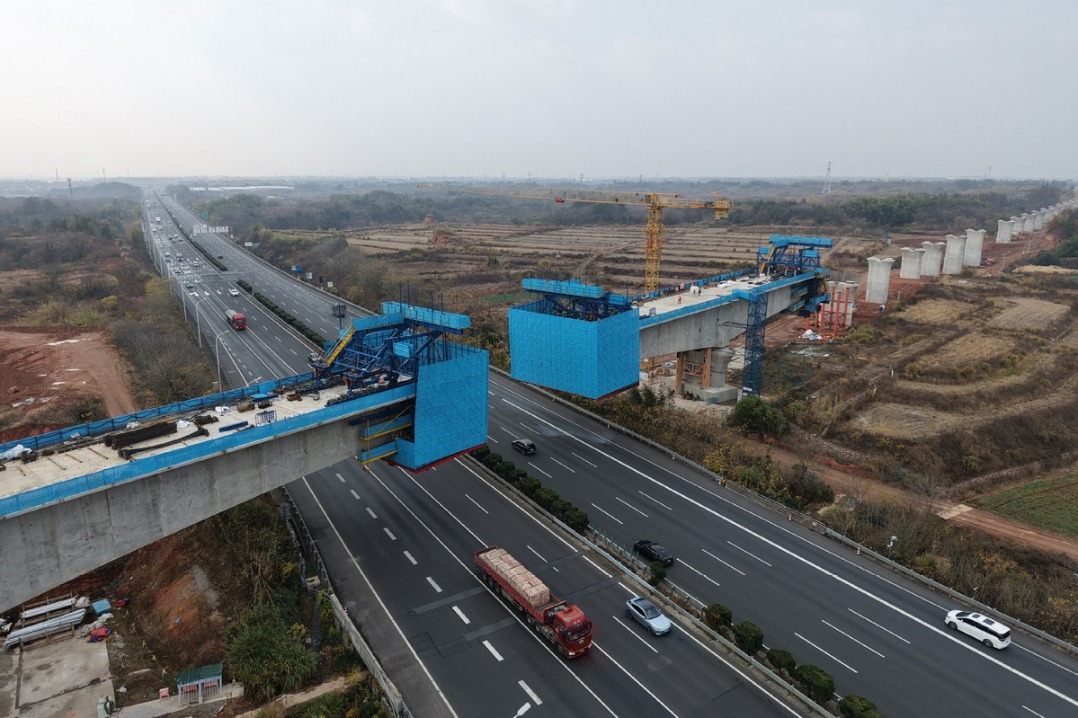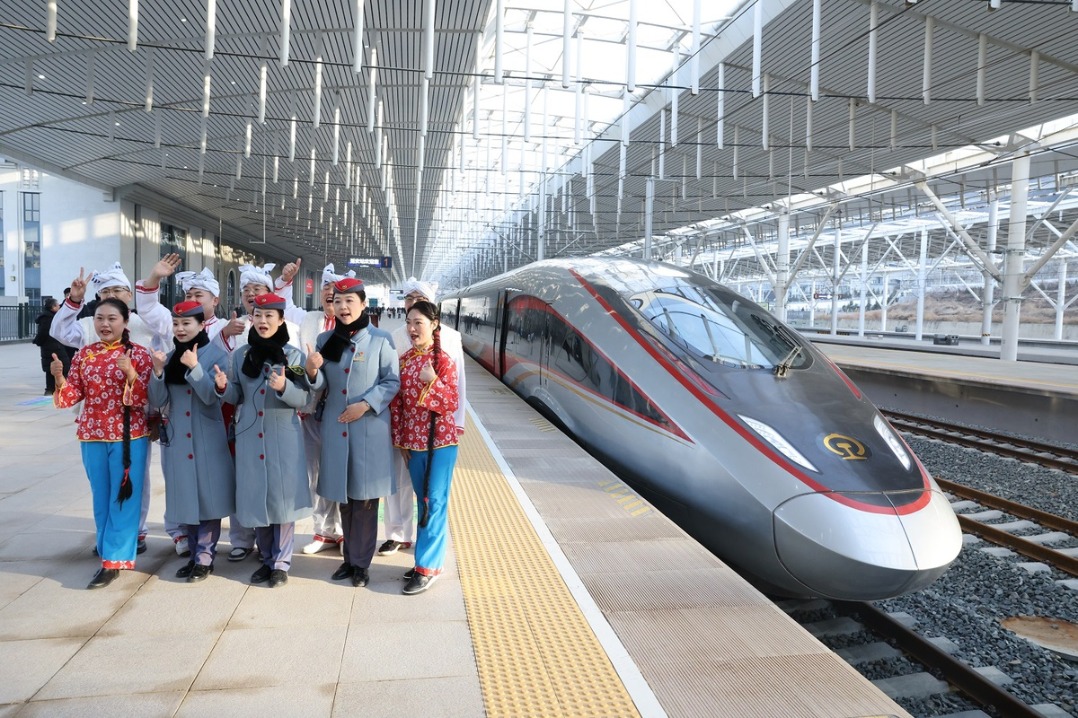Many 'excellent signals' seen in work report


Analysts welcome GDP growth target, steps to boost economy as showing government resolve
The Government Work Report delivered by Premier Li Keqiang addressed concerns about China's economy and included measures to alleviate trade tensions, according to experts.
The report, delivered on Tuesday, set a target for GDP growth this year of between 6 and 6.5 percent, which was lower than the "around 6.5 percent" target last year.
It also included announcements about the opening-up of the Chinese economy to foreign businesses and measures aimed at boosting the economy such as tax cuts, particularly for small businesses, and major new funding for local governments to finance new infrastructure projects.
Louis Kuijs, Hong Kong-based head of Asia economics at Oxford Economics, an economics consultancy, said the GDP target demonstrated that the government was still determined to meet its goal of becoming a "moderately well-off society" in time for the 100th anniversary in 2021 of the founding of the Communist Party of China.
To do this, it has to grow by at least 6.2 percent in each of the next two years in order to double 2010 GDP per capita.
"It (the report) indicated that growth remains a key economic target, and it made us mindful that the government had not forgotten its main goal," he said.
Although the new target is lower than the 6.6 percent achieved last year - the lowest growth rate for 28 years - this is not necessarily bad news for the global economy.
Suan Teck Kin, head of global economics and market research at Singapore-based United Overseas Bank Group, said China is now a much bigger economy than when it was growing at double-digit rates.
"Slower growth should not be alarming for those who have been watching China closely, as the size of the Chinese economy has grown," he said.
"This means that growth by 1 percentage point today will have a much larger impact compared to 10 or 20 years ago, due to the much larger base."
Zhu Ning, Oceanwide professor of finance at Tsinghua University, believes that by setting a range target and not a specific number, the government could be signaling that it may be abandoning growth targets in the future.
"It could be the beginning of the end of growth targets, which I think would be a good thing. Once the centennial target is met, the government may move from targets to forecasts along the lines of other major economies," he said.
Alicia Garcia-Herrero, senior fellow at Bruegel, a Brussels-based economics think tank, said most of the adverse reaction to the lower growth target was on the Chinese stock markets and not international ones.
"It is Chinese investors who need to get used to lower growth, as most of the fall was in China's stock market, which is dominated by Chinese investors. It is healthier for China," she said.
Chris Rowley, a professor at Kellogg College of the University of Oxford, said: "The new target needs to be analysed and looked not in isolation, but in comparison, over both time and place to give a better perspective."
"Thus, in some historical comparison, such as the heady halcyon days of 14%-15% GDP growth rates of the mid-1980s, early 1990s and just before the 2008 Global Financial Crisis and even 10%-11% of 2010-11, it seems is a relatively 'modest' figure. However, by some international comparisons, such as the low growth rates in the UK, parts of the EU and even South Korea and the low, flat-line level in Japan, it is still a large figure!" Rowley said.
In the Government Work Report, Li said China-US economic and trade friction had had an adverse effect on the economy, but he announced a number of measures that are likely to alleviate tensions.
He committed to relaxing controls over market access for foreign companies and shortening the negative list relating to sectors in which foreign companies cannot operate, and said he would permit wholly owned foreign enterprises to operate in a number of sectors in which they are currently barred.
He also emphasized the importance of the pilot free trade zones in Shanghai and Hainan in the further opening-up of the economy.
"These are excellent signals," said Gary Hufbauer, a senior fellow and trade expert at the Peterson Institute for International Economics in Washington. "There are plenty of US skeptics ... but as the new measures are implemented, more support will be found in the US."
Jon Taylor, a professor of political science at the University of St. Thomas in Houston, Texas, also said China is sending a "positive signal" by vowing to treat Chinese and foreign companies as equals.
"It can serve not only as a mechanism to defuse both US and European complaints against China and their claims of unfairness against foreign companies, (but also) has the potential to help begin to smooth the rough waters of current China-US relations," Taylor said.
Douglas H. Paal, vice-president of the Asia Program at the Carnegie Endowment for International Peace, said the signals are welcome, but "the test will be in their implementation over time".
"(If well implemented) they will relieve some of the dissatisfaction at restrictions in China and the relative freedom China enjoys in other markets, leading to a more level playing field," Paal added.
On the domestic front, Li announced a series of tax cuts on private enterprises, many of them targeted at small and micro businesses, which have been hit particularly hard by financing difficulties.
He cut both the tax burden and social insurance contributions of private enterprises by nearly 2 trillion yuan ($298 billion) and cut the value-added tax rate.
"The tax cuts are aimed at a more precise category of company, and they are a very efficient and inclusive way of stimulating the economy," said Zhu from Tsinghua University.
Another major announcement was 2.15 trillion yuan of special local government bonds, an 800 billion yuan increase from last year.
Zhu, also author of China's Guaranteed Bubble, which is about the debt challenges of China's economy, said the bonds would go a long way toward financing the 1 trillion yuan of extra infrastructure investment announced by the National Development and Reform Commission in January.
"This is a serious amount of money. It is an investment boost in the economy that will make local governments more disciplined in relation to their financing compared with the excessive borrowing of the past underwritten by the central government," he said.
George Magnus, research associate at the University of Oxford China Centre and author of Red Flags, believes the report's overall package of measures should give China's economy a short-term boost and ease its slowdown, but said there are still economic challenges ahead.
"The economy should stabilize before long - and perhaps in good time for the 70th anniversary in October - but that's all about fine-tuning. The issue for the medium term isn't about counter cyclical measures but about fundamental growth drivers," he said.
Douglas McWilliams, deputy chairman of the Centre for Economics and Business Research, the London-based economics consultancy, said he was partly reassured by the report but believes extra measures may be needed to keep the economy on track.
"The Chinese authorities have the fiscal and monetary firepower to prevent the slowdown turning into something much worse. But we also expect that they will have to bring forward some of their infrastructure spending plans and may need to cut taxes even further," he said.
Wang Huiyao, president and founder of the Center for China and Globalization, a Beijing-based think tank, who was present at the Great Hall of the People for delivery of the Government Work Report, believes the report could prove to be defining.
"I can't remember seeing a report speech receive so much applause," he said. "It was a very practical report with a number of important new policy announcements that are likely to bolster the economy."
Yang Han, Zhao Huanxin, Han Baoyi and Chen Weihua contributed to this story.
- Liaoning fire: Report urges legal action against restaurant operator and seven others
- Historical Han Dynasty slips go on display in Hohhot
- Shanghai unveils steps to build sci-tech innovation corridor in Yangtze River Delta
- Xiangchao concludes with Yongzhou claiming championship
- Answers
- CPC leadership meeting urges steadfast implementation of eight-point decision on improving conduct





































